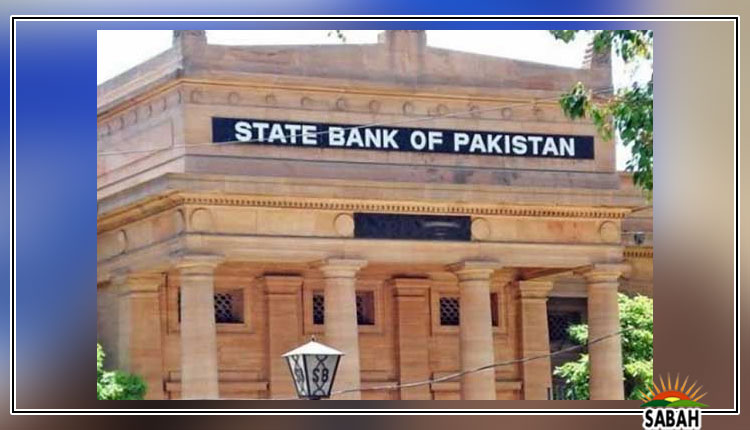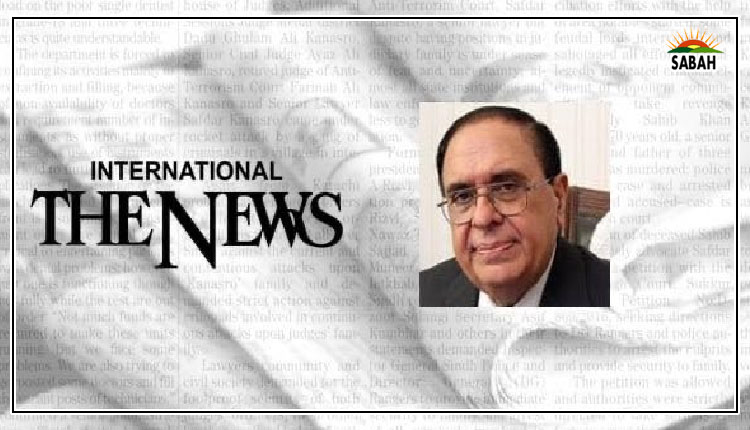An unforgettable period … Atta-ur-Rahman
With the passing away of Gen Pervez Musharraf, a memorable era in the history of Pakistan came to an end. He was a man of determination and unquestionable integrity, with unbounded love for his country. Like any other person, he committed several mistakes, but those were honest errors of judgement.
Pakistan made remarkable progress during his rule between 2000 and 2008. The country was on the verge of economic default in October 1999 when Musharraf came to power. During the nine-year period, the countrys GDP almost tripled from $63 billion to $170 billion with a remarkable annual growth rate of about seven per cent, which was better than most world economies.
Pakistans per capita income also more than doubled, rising from $430 to $1,000 in the same period, and its foreign exchange reserves, which had slid to only $ 0.5 billion in 1999, increased 33 times, rising to $16.5 billion by 2008. Revenue generation also tripled, rising from Rs308 billion in 1999 to Rs1000 billion by 2008. Our exports grew by over 200 per cent, from $7.8 billion in 1999 to $17.5 billion by 2008. The debt-to-GDP ratio that stood at a dangerous level of 102 per cent in 1999 improved to 53 per cent by 2008.
Investor confidence in Pakistans economy soared, and foreign direct investment rose from a negligible $400 million annually to $8.4 billion. The Karachi Stock Exchange shot up from the precariously low level of 950 points to a robust 16,500 points. The annual development budget increased from Rs90 billion in 1999 to a 600 per cent higher level of Rs520 billion, so that far more funds were available for national development projects. The emphasis on agriculture to address the issue of rural poverty led to sharp increases in agricultural productivity with the resulting decline in poverty levels from 34 per cent of the population (1999) to 17 per cent by 2008 no mean achievement.
As a result of all these remarkable developments, Pakistan was included in the list of N-11 (Next 11) countries by 2008 that were predicted to rapidly emerge and join the most powerful economies of the world.
To boost agricultural output in the country, many important irrigation projects were undertaken. A large number of dams and canals were built. The steps led to a major impact on agricultural productivity. For example, wheat production increased from 14 million tons to 22 million tons, and cotton production increased from 9 million bales to 13 million bales. Other crops showed similar increases.
The energy sector was given top priority and 2900MW of electricity was added to national generation capacity. The new energy projects initiated included the Ghazi Barotha hydro electricity project (1600MW) and the Chashma – II nuclear electricity plant (300 MW); over six thermal electricity plants were set up. Hydroelectric power was given priority to produce pollution-free electricity at cheap rates. The 1800MW Neelum-Jhelum hydroelectricity project was initiated, along with the Satpara Power project in Skardu, and the Naltar power project in Gilgit.
A strong road and highway network is essential for industrial growth and to provide efficient outlets of our agricultural produce to town and city markets. Communication infrastructure was therefore rapidly improved under Musharrafs rule. A number of airports were also constructed and expanded.
A truly remarkable transformation occurred in the telecommunication sector under my charge. The number of mobile phones increased from 0.6 million in 2000 to over 70 million by 2006, making it the hottest growing sector of the economy. People were reluctant to have mobile phones as they had to pay for receiving calls. This was changed so that only the calling party paid, and not the call receiving party (the calling party pays regime was introduced). The teledensity thus increased from 2.9 per cent to over 70 per cent, and millions of jobs were created in the telecom sector. Pakistans first satellite was placed in space at the slot at 38 degrees.
The IT sector also saw a phenomenal growth with internet connectivity spreading rapidly, particularly during 2000-2003 from 40 cities to over 2000 towns of Pakistan. The bandwidth cost of two megabytes was reduced sharply from $86,000 to $3,000 per month. Pakistans first satellite PakSat 1 was placed in space, thereby securing the only slot left.
Internet access was rapidly increased from only 29 cities by August 2000 to over a thousand cities, towns and villages by 2002, and fibre was laid across the country, increasing penetration from 40 cities to 400 towns and cities. The number of internet users was increased from only 130,000 in August 2000 to four million users by the end of 2002 the exponential growth continued in the subsequent years.
A revolution was brought about in the higher education sector with the establishment of the Higher Education Commission. Student enrolment in universities increased from 270,000 to 900,000 and the number of universities and degree-awarding institutions increased from 57 in 2000 to 137 by 2008. The emphasis was on quality rather than numbers, which was reflected by massive steps taken to send thousands of students for PhD studies to top foreign universities so that the faculty could be strengthened. The rapid transformation deeply worried India and a detailed presentation was given to the Indian prime minister on July 22, 2006 about dramatic progress in Pakistan. This was published in Hindustan Times on July 23, 2006 in an article entitled Pak Threat to Indian Science by Neha Mehta.
A number of steps were taken to strengthen democracy at the grassroots. A large number of new TV channels were allowed, and the press given full freedom. The local government system was launched to empower people through a third tier of government. The political empowerment of women was done by allocating reserved seats for them at all tiers of government. The political empowerment of minorities was done through the Joint Electorate.
In the field of defence, the production of Al Khalid tanks for the army and JF 17 thunder fighter jets for the PAF was carried out. Important purchases that strengthened our forces included AWAC surveillance aircraft for the PAF and frigates and P3C surveillance aircraft for the navy. All missiles were tested and proven for nuclear capability and the nuclear arsenal was strengthened and protected through an impenetrable command and control system. The Army Strategic Force Command was created to protect these strategic assets.
Gen Musharraf is no longer with us but his contributions will long be remembered.
The writer is the former federal minister for science and technology and former founding chairman of the HEC. He can be reached at: ibne_sina@hotmail.com
Courtesy The News












